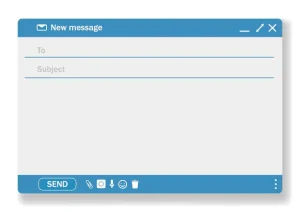Learn 12 best practices for writing effective email subject lines, including tips on clarity, personalization, urgency, and avoiding spam triggers.

1. Keep It Brief and Straightforward
- Why it matters: Email subject lines often get cut off in inbox previews, especially on mobile devices. Keeping them short ensures the main message is visible.
- How to do it: Limit subject lines to 5–8 words or 50 characters or less. Avoid filler words and focus on the most important part of your message.
- Example:
- Good: “Sale Ends at Midnight – Shop Now”
- Poor: “Don’t Forget to Take Advantage of Our Huge Discount Sale Before It Ends Tonight!”
2. Be Clear and Relevant
- Why it matters: Clarity ensures the recipient immediately understands what the email is about, increasing the likelihood they’ll open it.
- How to do it: Use straightforward language to describe the email’s purpose, avoiding vague or misleading subject lines.
- Example:
- Good: “Your Appointment Confirmation for January 20th”
- Poor: “Important Info You Don’t Want to Miss”
3. Use Action-Oriented Language
- Why it matters: Verbs that suggest action can make your subject line more engaging and motivate recipients to click.
- How to do it: Start with action verbs like “Discover,” “Get,” “Register,” or “Download” to encourage immediate attention.
- Example:
- Good: “Claim Your Free Ebook Today”
- Poor: “Here’s Your Ebook”
4. Add a Personal Touch
- Why it matters: Personalized emails often perform better because they feel more relevant to the recipient.
- How to do it: Include the recipient’s name, location, or other personalized information in the subject line when possible.
- Example:
- Good: “Sarah, Your Exclusive Offer Awaits”
- Poor: “Don’t Miss Out on This Offer”
5. Create a Sense of Urgency
- Why it matters: Urgent subject lines make people act quickly out of fear of missing out (FOMO).
- How to do it: Use phrases like “last chance,” “today only,” or “ends soon” to stress urgency, but avoid overusing this tactic.
- Example:
- Good: “Final Hours: Save 50% Now”
- Poor: “Hurry Up and Save While It Lasts”
6. Avoid Spam Triggers
- Why it matters: Over-the-top language or formatting can cause your email to land in the spam folder.
- How to do it: Avoid ALL CAPS, excessive exclamation points (e.g., “!!!”), and words like “Guaranteed,” “Free,” or “Act Now.”
- Example:
- Good: “Exclusive Offer for This Weekend”
- Poor: “FREE!!! AMAZING DEALS ONLY TODAY!!!!!”
7. Use Numbers and Lists
- Why it matters: Numbers stand out and imply structured, easy-to-read content.
- How to do it: Include numbers to highlight lists, discounts, or steps in a process.
- Example:
- Good: “7 Tips to Boost Your Productivity”
- Poor: “How to Be More Productive”
8. Experiment and Optimize
- Why it matters: What works for one audience may not work for another, so testing helps you find the best approach.
- How to do it: Run A/B tests by sending two versions of the email with different subject lines to see which performs better. Use analytics to refine your strategy.
9. Ask Thought-Provoking Questions
- Why it matters: Questions intrigue readers and encourage them to open the email to find the answer.
- How to do it: Use open-ended or rhetorical questions relevant to the recipient’s needs.
- Example:
- Good: “Are You Ready for Tax Season?”
- Poor: “We’ve Got Tax Solutions”
10. Match the Tone to Your Audience
- Why it matters: A subject line’s tone affects how your audience perceives your email, so it should align with their expectations.
- How to do it: For formal audiences, use professional language. For casual audiences, adopt a more relaxed tone.
- Example:
- Professional: “Important Update Regarding Your Account”
- Casual: “Guess What’s New? 🎉”
11. Include Searchable Keywords
- Why it matters: Many recipients will search their inboxes for specific emails. Including keywords ensures they can find your email later.
- How to do it: Use terms that match the email’s content and the recipient’s possible search queries.
- Example:
- Good: “Invoice #1234 – January 2025”
- Poor: “Your Monthly Update”
12. Stay True to the Content
- Why it matters: Misleading subject lines can frustrate recipients and damage trust, even if they open the email.
- How to do it: Ensure the subject line reflects the content of the email and delivers on its promise.
- Example:
- Good: “Download Your Free Resource Guide”
- Poor: “Important Info You Need to See!”
By focusing on clarity, engagement, and relevance, these practices will help you create subject lines that resonate with your audience and achieve better email performance.






Leave feedback about this